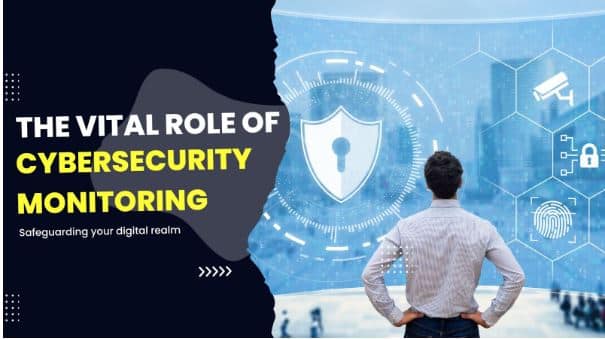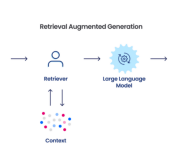The vital role of cybersecurity monitoring: Safeguarding your digital realm
Introduction
As the world becomes increasingly interconnected, our reliance on digital systems has grown exponentially. From the convenience of online shopping to the intricacies of critical infrastructure, our lives are deeply intertwined with digital technology. While this interconnectedness has brought about unprecedented opportunities, it has also exposed us to a new breed of threats. Cybercriminals, armed with sophisticated tools & techniques, exploit vulnerabilities in this digital ecosystem, seeking to compromise sensitive information, disrupt services & sow chaos.
Through continuous surveillance, cybersecurity monitoring identifies abnormal behaviours, unauthorised access attempts & potential vulnerabilities. It acts as a digital early warning system, alerting organisations to threats that might otherwise remain undetected until it’s too late. In essence, it’s the difference between discovering a breach in its infancy & dealing with the aftermath of a full-scale cyber catastrophe.
Understanding Cybersecurity Monitoring
Cybersecurity monitoring encompasses a comprehensive set of practices, tools & technologies aimed at actively scrutinising digital environments to detect, analyse & respond to potential cyber threats. It’s a multi-faceted approach that goes beyond the conventional perimeter defences, offering a holistic view of an organisation’s digital ecosystem. The primary objective is to fortify against the unrelenting tide of cyberattacks & breaches that threaten to compromise the very fabric of our digital lives.
At its heart, the essence of cybersecurity monitoring lies in its proactive stance. It’s not content with merely responding to incidents after they occur; rather, it strives to anticipate, pre-empt & neutralise threats before they can materialise into full-blown catastrophes. This forward-thinking approach is vital in an era where cybercriminals constantly innovate, devising new techniques to bypass traditional security measures. By identifying vulnerabilities & suspicious activities in real-time, cybersecurity monitoring acts as a potent shield, guarding against the ever-evolving arsenal of cyber threats.
One of the core tenets of cybersecurity monitoring is the rapid detection of potential breaches. Instead of waiting for the proverbial alarm bells to ring, monitoring tools are designed to raise red flags at the faintest whisper of suspicious activity. By doing so, they provide security teams with the critical time needed to investigate, assess & initiate countermeasures. This swift response can mean the difference between containing a breach within a limited scope & grappling with a sprawling data disaster.
With real-time visibility, organisations are equipped to detect insider threats, the often-overlooked vulnerabilities that arise from within. By analysing user behaviours & interactions, monitoring tools can flag deviations from the norm, hinting at potential breaches or unauthorised access. This invaluable insight is a cornerstone of a comprehensive cybersecurity strategy, as it allows for proactive intervention before minor aberrations snowball into monumental security breaches.
Detecting & Mitigating Malware Attacks
Malware often hides in plain sight, camouflaged amidst the legitimate activities of our interconnected world. This is where the discerning eye of cybersecurity monitoring comes into play. Monitoring tools are endowed with a unique ability i.e the capacity to discern the nuances of normalcy from the telltale traces of malware.
By analysing vast streams of data, these tools establish a baseline of normal behaviour within a digital ecosystem. Any deviation from this baseline is flagged as potentially suspicious, triggering further scrutiny. Unusual patterns in data traffic, erratic system behaviours & unexpected communications all raise red flags, indicating the potential presence of malware. This intricate analysis enables cybersecurity experts to pinpoint the lurking threats & take decisive action before they have a chance to wreak havoc.
Monitoring tools, with their finely tuned algorithms, can swiftly detect the subtle indicators of a ransomware attack. As these attacks begin to unfold, monitoring systems raise alarms at the first sign of unauthorised encryption activity. This early warning serves as a lifeline, enabling cybersecurity teams to halt the attack in its tracks, isolate the affected systems & prevent further encryption of data. In doing so, they not only shield organisations from financial losses but also safeguard the integrity of sensitive information.
Upon identifying a potential malware presence, monitoring systems can enact swift containment measures. They isolate affected systems, cutting off the threat’s potential vectors for spreading. Once contained, monitoring tools facilitate the neutralisation process. They work in tandem with other security mechanisms to analyse the nature of the threat, identify its origins & devise countermeasures to eradicate it. By halting the malware’s progress & eradicating its presence, monitoring tools mitigate the potential for widespread damage.
Real-time Incident Response: Navigating the Digital Battlefield
The significance of swift action in the face of cyber threats cannot be overstated. In the digital domain, where attacks can spread like wildfire, a timely response can mean the difference between containing an incident within a limited scope & allowing it to spiral into an organisation-wide catastrophe.
Consider a scenario where a breach is detected. The clock starts ticking & every passing moment provides cybercriminals with more room to manoeuvre. Real-time incident response is the cavalry charging in, armed with the insights garnered from cybersecurity monitoring. These insights empower cybersecurity teams to assess the situation, identify the threat’s origin & formulate a precise countermeasure strategy. By nipping the threat in the bud, organisations can minimise data exposure, financial losses & reputational damage.
When anomalies arise, cybersecurity monitoring tools are quick to respond. It sends out alerts to administrators, notifying them of potential threats or breaches. These alerts serve as a call to arms, prompting cybersecurity teams to initiate investigations & formulate a response plan. In essence, monitoring tools not only identify & analyse threats but also serve as a communication bridge between the digital realm & the human guardians tasked with its defence.
The true strength of real-time incident response lies in its ability to unravel ongoing cyberattacks. Picture this: a hacker attempting to infiltrate a network, probing for vulnerabilities. Cybersecurity monitoring tools spot the irregular activity & instantly alerts the security team. The team, armed with real-time insights, springs into action. They trace the attack’s trajectory, pinpoint its origin & deploy countermeasures tailored to the specific threat.
Safeguarding Business Continuity: Navigating the Storms of Cyber Incidents
The fallout from a cyber incident can resemble a series of cascading dominos, each toppling the other with rapid succession. The immediate disruption to operations is just the tip of the iceberg. System outages, data breaches & compromised services can lead to a snowballing chain reaction, resulting in lost revenue, frustrated customers & eroded trust.
Consider the scenario of a data breach that exposes sensitive customer information. The resulting media attention, legal repercussions & potential fines can tarnish an organisation’s reputation in an instant. This damage isn’t limited to the digital realm; it permeates the public perception, influencing the trust that stakeholders place in the organisation’s ability to safeguard their interests. In the unpredictable realm of such cyber incidents, it’s not a matter of “if” but “when.” Even the most robust defences can occasionally falter in the face of evolving cyber threats. This is where disaster recovery enters the stage & cybersecurity monitoring steps into a pivotal role.
Imagine a cyberattack crippling critical systems. In this dire moment, every passing second can lead to escalating damage, prolonging downtime & magnifying financial losses. By swiftly identifying the breach & pinpointing the affected areas, it arms disaster recovery teams with critical insights. These insights enable a swift & targeted response, allowing for the isolation of affected systems, the restoration of operations from backups & the eventual resumption of business as usual. This timely intervention not only mitigates the impact of the incident but also prevents prolonged disruptions that could have severe financial & reputational consequences.
Conclusion: Embracing the Digital Sentinel
As we navigate this complex digital landscape, it’s crucial to recognize that the battlefield has shifted. The days of relying solely on perimeter defences are long gone; cybercriminals have evolved & so must our strategies. Cybersecurity monitoring offers a proactive approach that aligns with the dynamic tactics of attackers. It empowers organisations to anticipate & mitigate threats before they escalate into crises, ensuring that operations remain unimpeded, data remains secure & reputations remain intact.
The imperative for readers is clear: embrace cybersecurity monitoring as an essential pillar of your digital defence strategy. It’s not merely a matter of implementing tools; it’s about fostering a culture of proactive vigilance. Embrace the power of real-time incident response, the resilience of disaster recovery & the unyielding dedication to business continuity. By prioritising cybersecurity monitoring, you’re not just protecting digital assets; you’re safeguarding the very essence of your organisation’s identity.




























